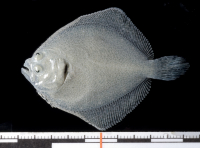 NEWS
NEWS
CRG researchers contribute to the sequencing of the Turbot genome
PRESS RELEASE
CRG RESEARCHERS CONTRIBUTE TO THE SEQUENCING OF THE TURBOT GENOME
The first vertebrate to be genetically sequenced in Spain, the Turbot (Scophthalmus maximus), has a much more refined visual system than other fish as it has evolved to adapt to the shortage of light of the seabed. In addition, the fat in its cell membranes are far higher than in other species to withstand the low water temperatures in its habitat.
The complete genome sequencing of this fish, carried out by scientists from the Spanish National Research Council (CSIC), the University of Santiago de Compostela, the CNAG-CRG and the Centre for Genomic Regulation, has now brought this and other conclusions to light. The work opens the way for further investigation, not only into the Turbot's resistance to different illnesses, but also to look more deeply into how other fish respond to these pathologies. The results, published in the journal DNA Research, could eventually be used to design genetic selection programmes, or possible vaccines.
The flat-bodied Turbot, rhomboid-shaped, and with both eyes found on its left side, underwent a process of metamorphosis during its development, which is when it began to develop a body distribution which is atypical in flat fish. And it's because of this circumstance it lives on the sea-bed, which means it has had to adapt to an environment of very little light and chillier waters.
"We have seen that many of the genes which are involved in sight, mainly those which carry pigment codes, and others involved in forming the crystalline, are repeated in this vertebrate with respect to other fish. This would indicate that they have evolved, refining their sense of sight to adapt to the low levels of light which surrounds them", says CSIC investigator, Antonio Figueras, from the Institute of Marine Investigation in Vigo.
In order to tolerate these low temperatures, the Turbot has a number of genes related to fatty acids in the repeated cellular membranes, when compared with other organisms which live at higher temperatures. The lipid composition of these membranes is a key factor when it comes to withstanding cold.
CRG researchers contributing to this paper are members of the Computational Biology of RNA Processing laboratory led by Roderic Guigó, the Comparative Genomics group led by junior group leader and ICREA research profesor Toni Gabaldón, and the Bioinformatics Unit led by Julia Ponomarenko.

